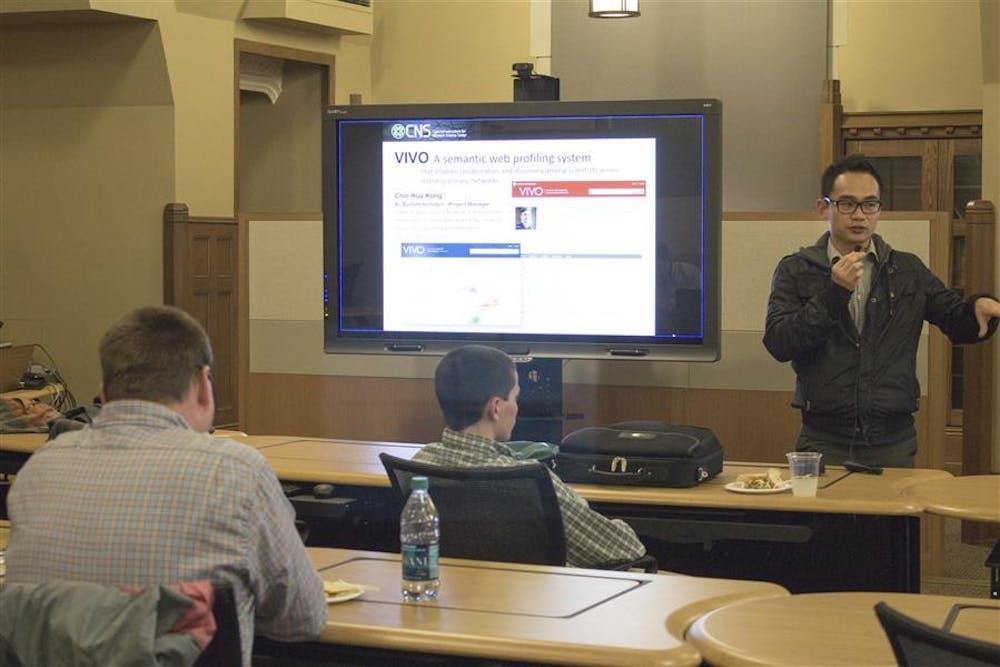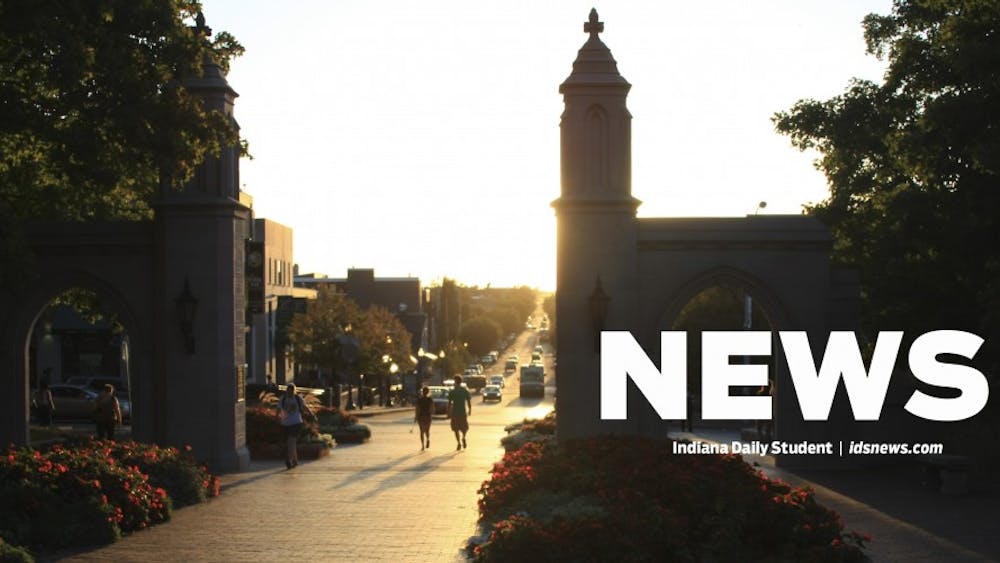Students and professors trickled into Woodburn Hall, looking around at the screens lining the front of the room and the rows of empty tables, serving as seats for incoming visitors.
Colleagues and presenters from the School of Informatics and Computer Sciences milled around the cluttered room, swapping research updates and wishing each other luck on their upcoming presentations.
The SOIC’s Cyberinfrastructure for Network Science Center held an open house on Monday for students and faculty interested in the CNS’s newest technologies.
Attractions included hands-on demonstrations, talks with experts in the business and a viewing of the award-winning short film “Humanexus: Knowledge and Communication Through the Ages.”
CNS specializes in repurposing big data by analyzing data and recreating it visually, making it more easily accessible to the public.
The IU School of Informatics and Computing operates the center, which is located in Herman B Wells Library.
Katy Börner, professor of information sciences, informatics and statistics, and director of the CNS, organized the event to show the work of CNS interns and faculty.
“What we are trying to achieve with this open house is to help people understand how to make better sense of data and learn to use advanced tools that are actually easy to use,” Börner said. “I believe that being able to generate and understand data is as important as being able to read and write.”
Scott Emmons, a CNS intern and high school junior from Bloomington High School North, presented his research on predicting consumer purchases based on consumer demographics.
“Once you go from data to space, the relationship between the products becomes clear,” Emmons said.
Emmons, by far the youngest speaker of the group, got his internship through the service learning program at his high school. He said that because of this internship, he is considering attending IU after high school.
Ali Jafari, an IUPUI professor who also created OnCourse, presented his work at the open house. His new project is CourseNetworking, an online service that he described as “academic social networking.”
Jafari said that CourseNetworking combines learning management services with social networking aspects, making it a more “engaging” and “student-driven” resource. This service is free and available to students worldwide.
“We’re trying to make learning really exciting,” Jafari said.
In addition to research presentation, the open house provided information on the Information Visualization MOOC course, the first of which was launched January 2013.
This graduate-level class provides a foundation on the art of information visualization.
The first course had 1,780 students enrolled from 93 different countries. Most of the students were from the United States, India, Canada, the United Kingdom and the Netherlands.
Lecturer Scott Weingart will teach the spring 2014 course.
For this coming semester, there are some proposed extensions to the course material, including information visualization for the digital humanities and statistics.
Gabriel Zhou, a Ph.D student in Computer Sciences, said he attended the event because he wanted to see his colleagues and hear Börner speak.
“I’m also doing info-based research so the demos were beneficial to my own research,” Zhou said.
After the presentations, members of the audience mingled with the speakers.
“Ultimately, I believe anyone can make sense of data,” Börner said. “Just like anyone can cook, anyone can map and visualize data and make sense of it.”
Interactive open house shows SOIC tools

Get stories like this in your inbox
Subscribe





